11 Types of Buses (Vehicles) and Advantages & Disadvantages Traveling by Bus [with Pictures & Names]
![11 Types of Buses and Advantages & Disadvantages Traveling by Bus [with Pictures & Names]](https://engineeringlearn.com/wp-content/uploads/2022/07/Buses-1024x539.jpg)
Introduction
Types of Buses and Advantages & Disadvantages Traveling by Bus [with Pictures & Names]: – Roadways are opted for individuals who need to manage expenses or individuals who need to go with their own means of transport, within the city/town, or individuals who need to observe and experience inch by inch of travel alone or with family. ( Types of Vehicles )
As the growing patterns, individuals opted for a bike for simple and convenient travel. Nevertheless, due to increased pollution and to safeguard or defend from such pollution, people are gradually switching over to four-wheeler for more comfortable travel. Traveling by owned vehicles is a way unique inclination furnishing free heading out concerning now is the right time and solace and a greater amount of individuality. The convenience that an owned vehicle or self-propelled, one gives more than some other.
Buses are an essential part of the transportation framework and there are a wide variety of bus types that transfer millions of individuals each day for work, school, and leisure. Travel by bus to inter-urban communities, regions, and states, where usually seats would be dispensed to them if purchased. These buses are one of their kind not quite the same as local buses for their design, seating, comfort, and so on. To travel far away places, Buses are one of the easiest and least expense transport after railways.
Types of Buses
The following is the list where we will explain the most normal types of buses that you will experience on the road.
1. Single Deck Bus: ( Types of Buses )

This is the most widely recognized bus. A standard traveler transport has a solitary deck and is normally utilized by travel frameworks, the travel industry companies, and charter bus companies. A standard-size single deck bus carries 60 to 120 passengers and ranges from 16 to 39 feet in length. They commonly run on diesel fuel or natural gas with the engine located in the back to permit easy passage and easy visibility and perceivability for the driver.
2. Double Decker Bus: ( Types of Buses )
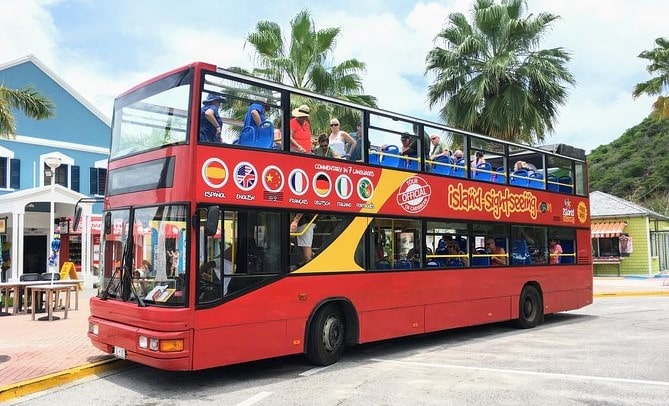
Double-Decker buses or Multi-level buses are utilized for both mass travel and the travel or tourism industry and are normally connected with the iconic red AEC Route master transports in many countries. These buses have two decks for travelers with a staircase to access the upper deck.
Otherwise called double tall buses, Double-Decker buses are utilized in some metro regions of the world. Double-Decker buses are restricted on the routes they can take because of their height (around 14.5 feet) as drivers need to stay away from any scaffolds, utility links, or different deterrents with low leeway. When utilized for public transportation, they might be inefficient for incessant stops in light of the extra time expected for travelers to get off. They are a superior fit for longer excursions like local express routes.
3. Trolleybus: ( Types of Buses )
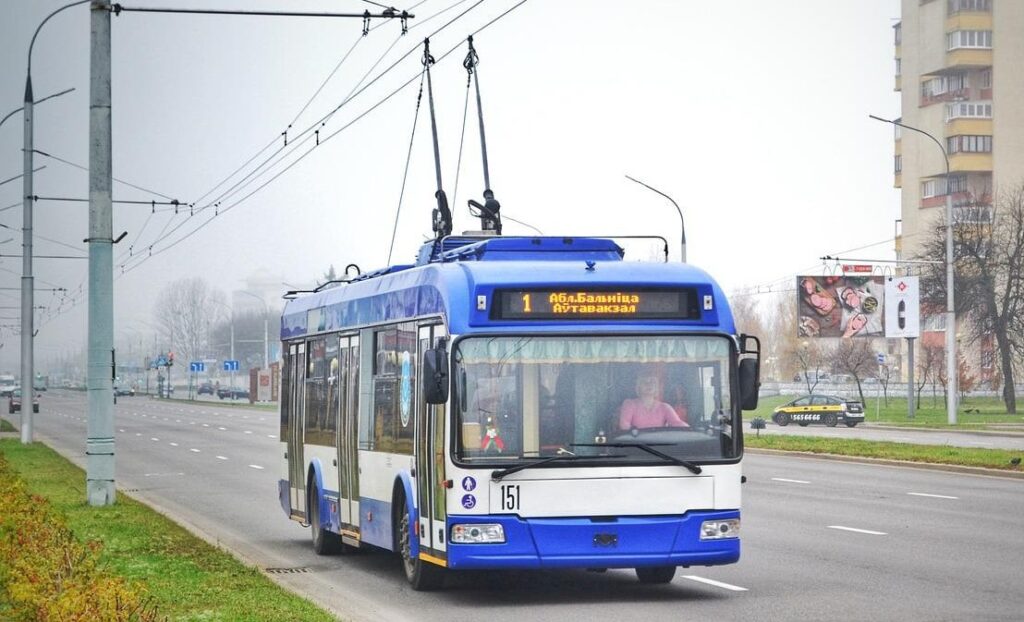
Instead of gasoline or fuel, the trolley bus has electrical associations overhead in order to run. Furthermore, for that, it is limited or restricted to specific or certain routes only. It isn’t equivalent to Trolley or streetcar since the trolley buses or involves a rail as a track and source or power.
4. Coach Bus: ( Types of Buses )
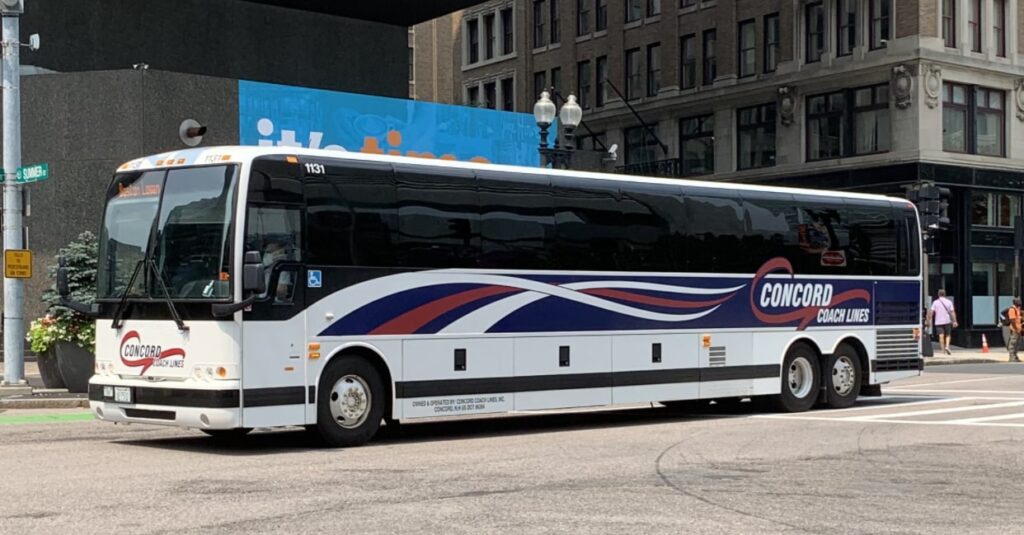
A Coach Bus transport has a separate portion for baggage which makes person rides easy. It is a single-decker, yet this kind of traveler vehicle is best for extremely long-distance travel from one city to another city or to rural places.
5. Midi Bus: ( Types of Buses )

It is classified or delegated as a single deck bus transport however smaller in capacity. As its name suggests, is it a medium-size bus transport, neither too small nor extremely large. All the more important, it is designed for economical purposes as opposed to standard size bus transport which utilizes more gas.
6. Minibus: ( Types of Buses )

As the name suggests, Minibus is smaller than the midi Bus, minibus has less seating capacity (8-30 seats). yet it is bigger than the minivan. ( Types of Vans )
7. Articulated Bus: ( Types of Buses )

It has a design similar to single-decker bus transport, just that the articulated bus is longer (approximately 18 meters). It has two segments associated with a joint that can be bent. It is additionally referred to by different names, for example, tandem bus or accordion bus. However, what makes it one of a kind(unique) is that, though longer and has a larger seating capacity than the single-decker it can turn effectively on street corners.
8. Bi-articulated Bus: ( Types of Buses )

Another variety of articulated bus transport is the bi-articulated bus. It has another part associated with the other one. (If you have fancy licenses, you can invent a “tri-articulated bus transport”.)
9. Private Bus: ( Types of Buses )

These buses (private buses) are utilized for special trips or outings. It very well may be utilized by a family heading for a summer camp, by a sports group destined for a competition, or by any group of private people.
10. School Bus: ( Types of Buses )
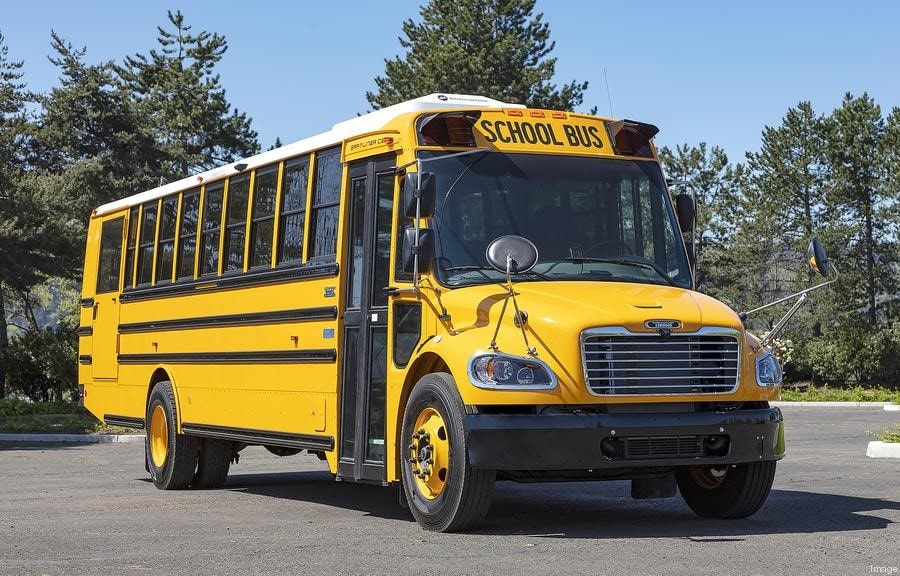
A school bus is a somewhat a single-decker bus utilized in transporting students from their homes to school, as well as the other way around. It is distinctive in its yellow and dark colors.
11. Special Bus: ( Types of Buses )
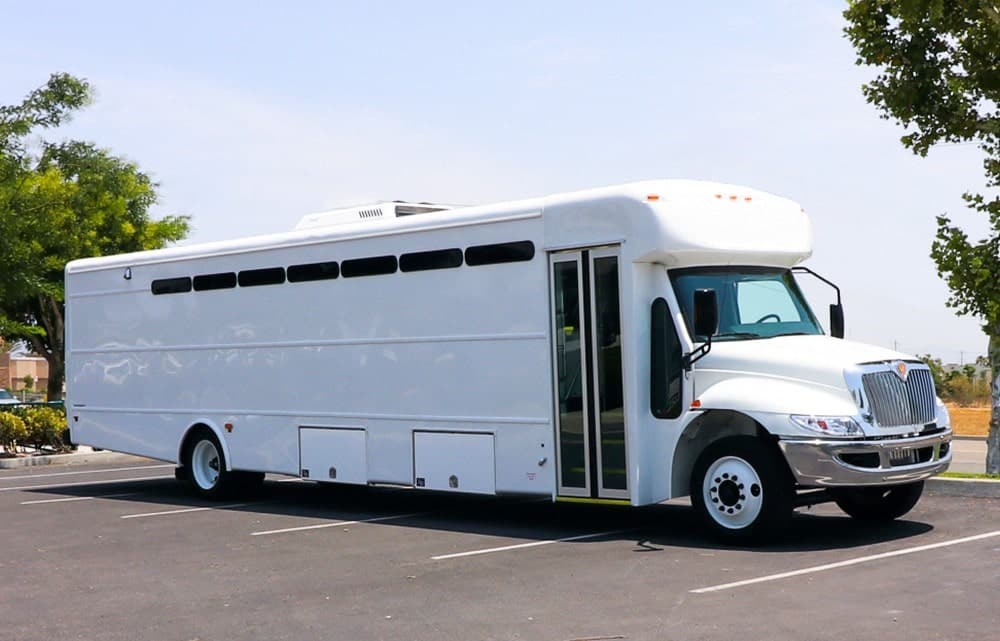
Special buses are the types of buses mostly utilized by police authorities for transporting prisoners, by specialists for a medical or clinical mission, via air terminal officials, and so on. Some are utilized as a classroom or a PC shop, and others are perhaps utilized for business advancements and different tasks.
Advantages of Traveling by Bus
The upside or benefits of traveling by Bus transport are discussed below: –
1. Least Cost Transportation
Bus transport is a kind of transport which has a minimum or negligible cost of transport after railways. It is the most effective way to reach your destination at the optimum expense. The Bus is opted or picked by the majority of individuals who are acquainted with such travel and give a chance to travel to limit the expense. To go to distant places, individuals opt for bus travel to accommodation travel. At the point when individuals go in groups, they normally opt for the bus to travel.
2. Security
Individuals usually feel safe and secure traveling by bus especially women at late times. The system of separate seating for women and gentlemen makes many individuals travel by public transport. It is a sort of transport to have consistent or predictable execution.
3. Easy Access
It is one of the most accessible means of transport which make a trip or excursion from one spot to the other place, whenever and get you at your convenient time. It mostly covers any place in the city for Intra travel, though for inter travel, it is covered to an extent. It can reach individuals effectively to their destination because of its availability in place, time, and so on.
4. Indirect Contribution to the Economy
Assuming individuals travel by Bus transport or in some other public transport, the pollution emitted by a number of vehicles lessens. If Individuals become more careful and responsible for your country, make it their own country to live, will opt for public transport. The Least contribution can be essentially traveled by public transport greatest conceivable. This doesn’t intend to not utilize any private vehicles, but rather be sufficiently determined to make decisions unequivocally for you and the country of our own.
Disadvantages of Traveling by Bus
The disadvantages of traveling by bus are discussed below:
1. Destination is Restructured
Bus Transports travel in a pre-coordinated and designed by their specific associations because of which they can’t change their route of the Bus transport. To arrive at a destination, they will quite often take short routes to reach faster and quicker. Yet, they are compelled to go through those courses regardless of their known routes. This applies to buses that travel far away places as well.
2. Change of Buses to Reach a Destination
As there are routes pre-structured, the traveler who needs to arrive at a specific destination might need to take more than one bus as opposed to immediate or single transport because of which there can be some inconvenience. Individuals need to look at prior to boarding a bus with regards to where, how, and what way they will be going to reach out destination. Prior and planned travel is comfortable when you travel by bus. On the off chance that you are unfamiliar with it, it really gets messed up.
3. Services Not Provided
In the event that the services are not provided by the respective bus companies, the overall population and their working get into some trouble that is happening in some areas because of some strikes by some goons. However, the buses are kept for the public, they wouldn’t get the quality as before as the services given by such employees. It influences individuals with inconvenience, irregularity, and so forth.
3. Inconvenience
There might be inconvenience anywhere, where there is immense population, and less transport implies or deficient by and large. Individuals will generally reach their destinations as soon as possible irrespective of the place, time, cost, and so forth.
4. Time Management
People need to offer extra opportunity to reach their destination appeared differently in relation to other transport as the timings vary and again concerning the appearance of the transport because of traffic issues or the traveler arriving at his starting point. Any matter for that case, individuals to save some cost, opt or pick buses and waste their valuable time. Assuming the traveler arrives at odd timings, the recurrence of the buses can be extremely low and need to wait perpetually. In private buses, they might start late because of unknown reasons, traffic issues, and so on influence the time of travelers.
Conclusion
There are both benefits and limitations to traveling by the bus. For any travel, there is generally a danger of risk to death. It is upon travelers how they travel and the means they select, likewise including the time of travel, place of travel, individuals with whom you travel, and so on. This multitude of events influences straightforwardly or by implication for any travel experience. Everyone has their own perception to travel. So utilize your knowledge with steadiness and travel securely, safely, happily, with a hopeful psyche to explore new challenges or occasions in the mere future.
Content Source: – lemonbin, planningtank, nearbyme2
Image Source: – flickr, viator, pixabay, wikipedia, evanshalshaw, byd, bizjournals












